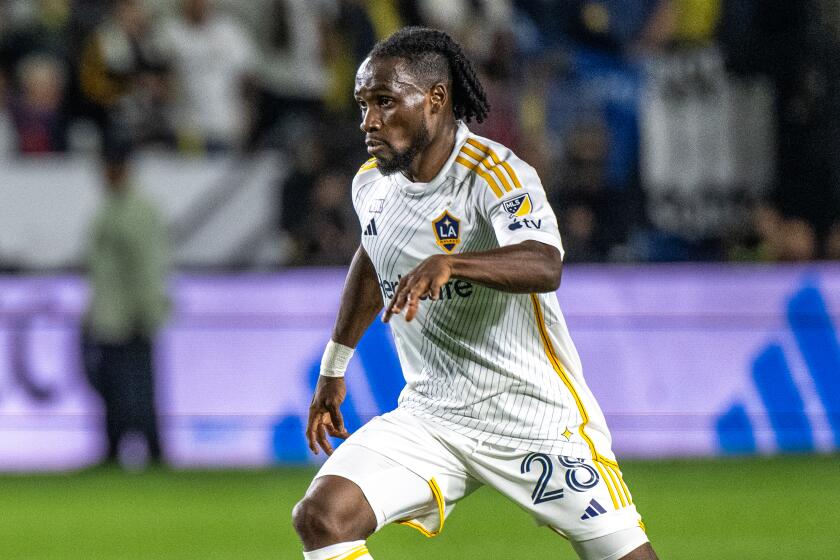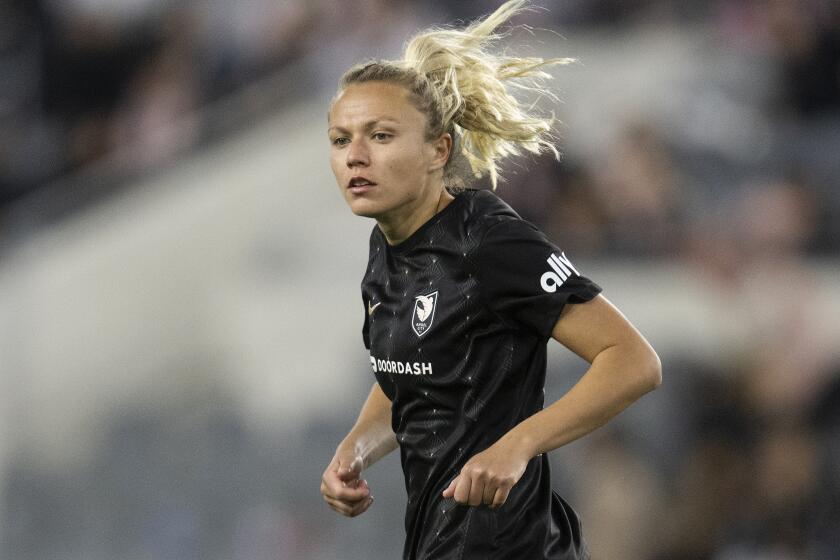Foreign soccer stars no longer putting down MLS

When Chivas USA folded after last season, it seemed like the perfect “Get Out of Jail Free” card for talented striker Erick “Cubo” Torres. Without a U.S. team to play for, he could return to his hometown of Guadalajara and rejoin the Mexican league club that loaned him to Chivas USA in the first place.
Only Torres didn’t want to go.
“Major League Soccer is going to become one of the most important leagues in the world in no time,” said Torres, who signed a five-year contract to play for the Houston Dynamo. “This league is growing and a lot of top-level players are going to want to come and play in the United States.”
Many already are. Last weekend marked the MLS debut of Kaka, a former world player of the year from Brazil, as well as Italian international Sebastian Giovinco and World Cup champion David Villa of Spain. Next up are Liverpool captain Steven Gerrard and Manchester City’s Frank Lampard, aging English stars who will join the exodus from Europe to MLS when the summer transfer window opens in July.
The U.S. has suddenly become a soccer destination. And what once was little more than a trickle of talent could soon turn into a flood.
“A lot of players are looking for this league now,” said Kaka, who scored a tying goal in stoppage time for Orlando City in his first game. “[In] five, 10 years it will be one of the biggest in the world.”
MLS’ blueprint for growth is one that has worked before.
Two decades ago Italy’s Serie A was the top league in the world. But its teams were so deep with talented, veteran players that stars such as Ruud Gullit, Gianfranco Zola and Gianluca Vialli jumped to England in search of playing time, starting a foreign invasion that eventually aided in making the English Premier League the world’s most popular and lucrative soccer league.
“It seems like it’s taking the same form,” Bradley Wright-Phillips, who played mainly for lower-division clubs in England before joining the New York Red Bulls in 2013, said of MLS. “A lot of legends — people’s favorite players — go to a league … and they end up staying. I think we might be on to something.”
MLS is not about to rival the EPL, of course. Although that league, formed when teams broke away from the Football League First Division, is only a few years older than MLS, it was built atop more than a century of soccer tradition the U.S. can’t match. Nor can MLS match the revenue the English league gets from sponsorships and broadcasting.
The 20 EPL teams will get a record $223 million from jersey sponsors this season while its TV deal will pay it $8 billion in domestic rights alone between 2016-19. That allows teams to spend lavishly on transfer fees and player salaries.
Compare that to MLS, with a domestic TV deal worth just $90 million over each of the next eight seasons. The league also has a salary cap, limiting what teams can spend on players, and says it finished last season more than $100 million in the red.
But MLS has advantages no rich European or South American teams can match — one of which is it’s not in Europe or South America.
“As soon as I came here, the first two weeks I was training, I didn’t want to go back,” Wright-Phillips said. “A lot of people, they know that when you come to America you have a good lifestyle.”
If the weather and the lifestyle — which includes enjoying a restaurant meal without being mobbed, something soccer players consider impossible in Europe — were once major selling points, it’s been enhanced by the improved quality of play in MLS. Games are televised around the world and that exposure, plus word of mouth from players, have raised the profile of a league once considered just a few steps above amateur.
“The calls I get on a weekly basis from players from England [saying] ‘I want to come here,’ you’d be surprised,” Bradley-Wright said. “A lot of people want to come here.”
Spanish goalkeeper Iker Casillas, 33, a World Cup champion, said this winter that he’s interested in MLS. So did Bastian Schweinsteiger, captain of the German national team, who will be nearing his 32nd birthday when his contract with Bayern Munich runs out in 2016. And Paris Saint-Germain’s Zlatan Ibrahimovic has been talking about a move to MLS for three years.
If any of them were to come, they — like Lampard, Gerrard and David Beckham before them — would arrive here well past their prime. But MLS is no longer just a place to pick up a couple of final paychecks before retirement. In the last two seasons, twenty-somethings Michael Bradley, Jozy Altidore, Mix Diskerud and Obafemi Martins all left European clubs to play for MLS teams. And Torres, the former Chivas USA star who decided to stay, is only 22.
Ultimately the success of MLS will depend on the contributions of homegrown players such as the Galaxy’s Gyasi Zardes, which is why the league is investing about $30 million a year on youth academies and development. But the influx of young, skilled players from abroad will help hasten the day MLS makes good on Commissioner Don Garber’s prediction that it will become one the world’s top five leagues.
“I had the opportunity to stay in Milan. Gerrard and Lampard, they also had the opportunity to stay in Europe. But we decided to come because the league has grown,” Kaka said. “It’s a very important moment for this development.”
Twitter: @kbaxter11







